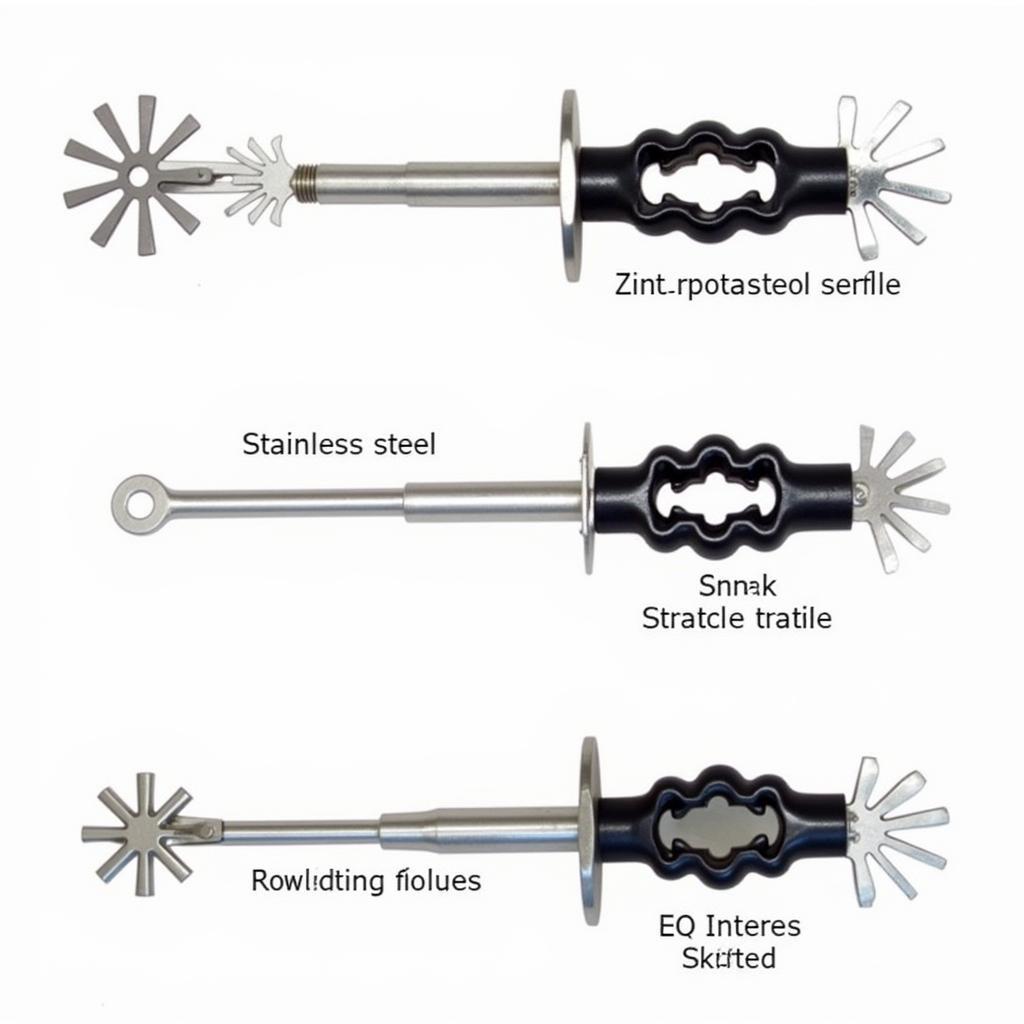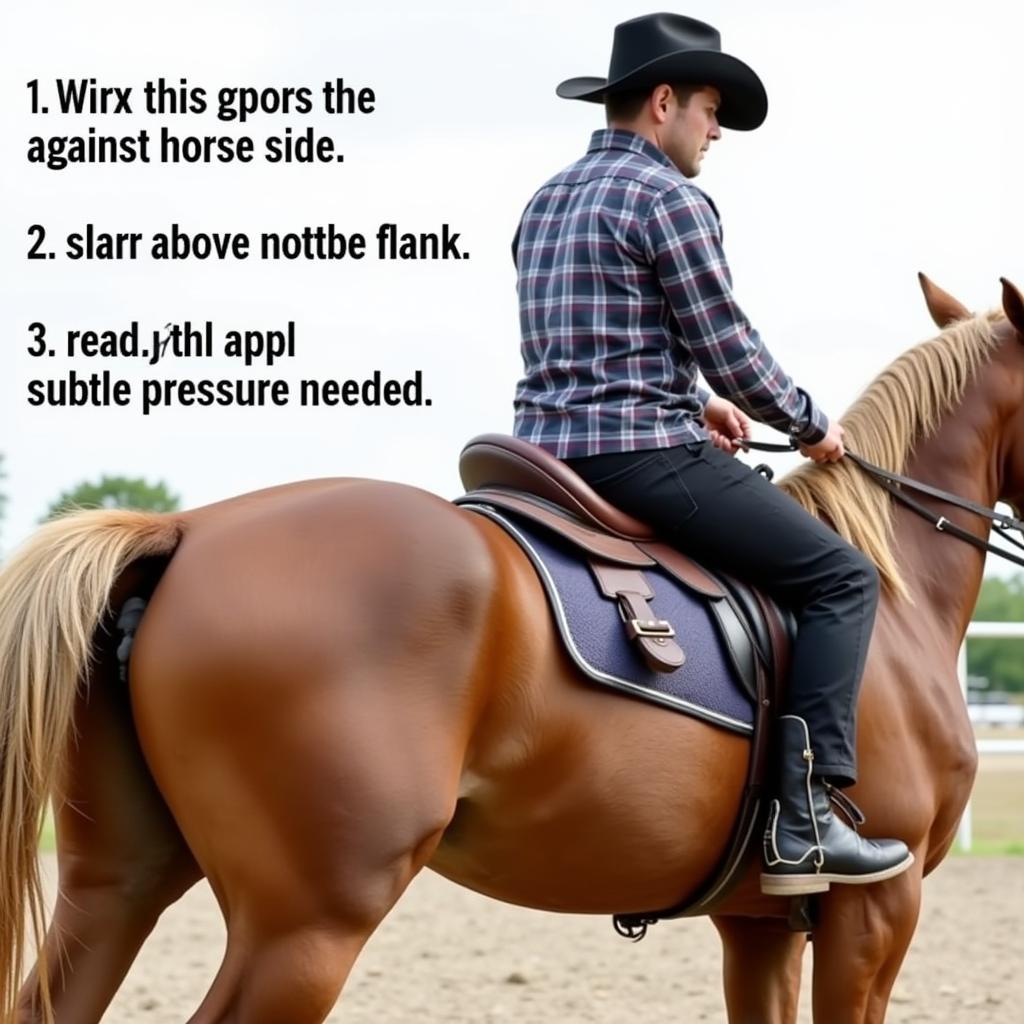Horse Spurs And Spur Straps are essential pieces of equipment for many riders, used to refine communication and encourage specific responses from the horse. While seemingly simple, understanding the different types, proper usage, and potential risks associated with spurs and straps is crucial for both horse and rider well-being. This guide delves into the intricacies of these tools, equipping you with the knowledge to make informed decisions for your riding journey.
 Different Types of Horse Spurs
Different Types of Horse Spurs
Understanding Horse Spurs
Spurs are metal tools worn on the rider’s heels, designed to apply pressure to the horse’s sides. This pressure acts as an aid, reinforcing other cues from the rider’s legs and seat. It is important to emphasize that spurs are not meant for punishment but rather as a subtle means of communication.
Types of Horse Spurs
Spurs come in various designs, each serving a distinct purpose:
- Shank Length: Spurs range from short-shanked to long-shanked. Shorter shanks offer more direct pressure, while longer shanks provide a wider range of pressure application.
- Rowel Type: The rowel is the rotating disc at the end of the shank. Smooth rowels are gentler, while serrated or spiked rowels deliver sharper pressure.
- Material: Common materials include stainless steel, plastic, and even rubber.
 Correct Spur Usage
Correct Spur Usage
Using Spurs Correctly
Proper spur use is paramount. Misuse can lead to confusion, pain, and even injury for the horse. Key principles include:
- Subtlety is Key: Spurs should be used with the lightest touch, acting as a refinement of leg aids, not a primary driving force.
- Timing and Coordination: Spur pressure should coincide with other aids, such as leg squeezes or shifts in weight, to reinforce the intended cue.
- Rider Experience: Beginners should not use spurs until they have developed independent seat and leg aids.
Exploring Spur Straps
Spur straps play a crucial role in securing spurs to the rider’s boot and influencing their effectiveness.
 Leather and Synthetic Spur Straps
Leather and Synthetic Spur Straps
Choosing the Right Spur Straps
The ideal spur strap depends on personal preference and riding discipline:
- Material: Leather straps offer classic durability, while synthetic options provide affordability and ease of cleaning.
- Buckle Type: Roller buckles allow for easy adjustment, while hook-and-loop closures provide a secure fit.
- Width and Length: Straps should fit snugly around the boot, preventing the spur from shifting or slipping.
FAQs about Horse Spurs and Spur Straps
Q: When should I start using spurs?
A: Spurs are not recommended for beginners. Only use them under the guidance of an experienced instructor when your leg and seat aids are independent and refined.
Q: What type of spur is best for dressage?
A: Dressage riders often prefer short-shanked spurs with smooth rowels for subtle and precise aids.
Q: How tight should my spur straps be?
A: Spur straps should be snug enough to prevent the spur from moving but not so tight that they restrict circulation or cause discomfort.
Need More Help?
For personalized advice on choosing the right horse spurs and spur straps, contact us at Phone Number: 0772127271, Email: [email protected] or visit us at QGM2+WX2, Vị Trung, Vị Thuỷ, Hậu Giang, Việt Nam. Our 24/7 customer support team is here to assist you!